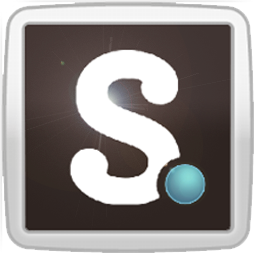Apple's
anticipated entry to the wearable devices market has taken on near-mythical
status, with rumors reaching every corner of the technology map. AppleInsider
has rounded up some of the technologies most likely to find their way into the
still-unannounced "iWatch."
Materials
Sapphire
Apple's interest: A $578
million deal with sapphire equipment maker GT Advanced Technologies to open
and operate a massive commercial sapphire plant in Arizona.
Much has been made of Apple's
agreement GT Advanced Technologies. Many believe the new jointly-operated
facility in Arizona will produce display covers to replace the Gorilla Glass
currently used in the iPhone and iPad; some think the crystals will be used in
an iWatch, while still others believe that Apple simply needs more sapphire for
its camera lenses and Touch ID housings.
If sapphire is to be used as a
main component of an Apple device, the iWatch is its most likely target.
High-end watch companies have long used sapphire to cover the faces of their
timepieces because of its scratch resistance, but — as anyone who has dropped a
sapphire-covered watch can attest — the material is prone to shattering, making
it far better suited for a device that's constantly strapped to a person rather
than hanging loosely in their hands.
Liquidmetal
Apple's interest: A $20
million contract for exclusive rights to use Liquidmetal in consumer
electronics and a number of manufacturing patents related to the material. That
agreement was re-upped through February 2015 earlier this week.
Liquidmetal is an amorphous
alloy — essentially, metallic glass — that is much lighter, harder, and more
flexible than metals traditionally used in electronics manufacturing. Parts
made of Liquidmetal could "snap back" from deformations that might
cause permanent bends or dents in other metals, such as Apple's omnipresent
aluminum, and it's extremely scratch-resistant.
Liquidmetal is difficult to
work with, however. Apple famously tested its viability by using it to make the
SIM ejector tool included with the iPhone 3GS, but Liquidmetal's inventor
predicted in 2012 that at least two to four years of further refinement in
manufacturing processes was necessary before it could be commercially viable on
a large scale.
Complicating Liquidmetal's
possible appearance in Apple's iWatch is a deal with Switzerland's Swatch group
that granted the horologists exclusive use of Liquidmetal in watches.
Displays
OLED
Apple's interest: Apple has a
number of OLED-related patents to its name, including dynamic brightness
adjustment and improved power efficiency. The company also hired away a senior
OLED researcher from LG Display.
OLED — or organic
light-emitting diode — displays are a new type of display in which each pixel
is made of an organic compound that emits light when electrical current is
passed through it. Because of this design, OLED panels don't require a
backlight, making them thinner and lighter than traditional LCD-based panels
and adding the potential to be folded or curved.
While many Apple watchers
previously expected the iWatch to ship with a more traditional LCD panel, the
tide of opinion has shifted in recent months in favor of OLED. The inclusion of
a flexible OLED would allow for a more form-fitting design in which the screen
could curve with the contours of the wearer's wrist, rather than sitting flat
on the top.
From the outside, Apple has
long seemed apathetic toward OLEDs. Former CEO Steve Jobs is thought to have
disliked the technology, and current chief Tim Cook panned OLED earlier this
year, saying that the displays showed "awful" color saturation.
"If you ever buy anything
online and really want to know what he color is, as many people do, you should
really think twice before you depend on the color from an OLED display,"
he said.
Micro-LED
A similar micro LED array
displayed by Taiwanese researchers
Apple's interest: Acquired
micro-LED display maker LuxVue Technologies earlier this month for an unknown
price.
Micro LEDs are essentially
exactly what they sound like: very small LEDs. The technology that enables
their miniaturization also plays a part in lowering power consumption and
increasing brightness, with the combination placing micro LED arrays in direct
competition with OLEDs.
This is a relatively new technology,
however; Apple's acquisition of secretive LuxVue is likely to have given micro
LEDs more exposure the day it was uncovered than the technology has received
since its invention. Despite a number of high-profile backers — and their
rumored inclusion in Google's next-generation Glass headset — micro LEDs have
yet to find their way into shipping consumer device.
Still, there is reason to
believe that Apple may have chosen the micro LED route. At least one of
LuxVue's patents covers the manufacturing of a curved micro LED array, which
could replace the flexible AMOLED display Apple is thought to have targeted.
The article above is a repost from Abney
and Associates.








0 comments:
Post a Comment